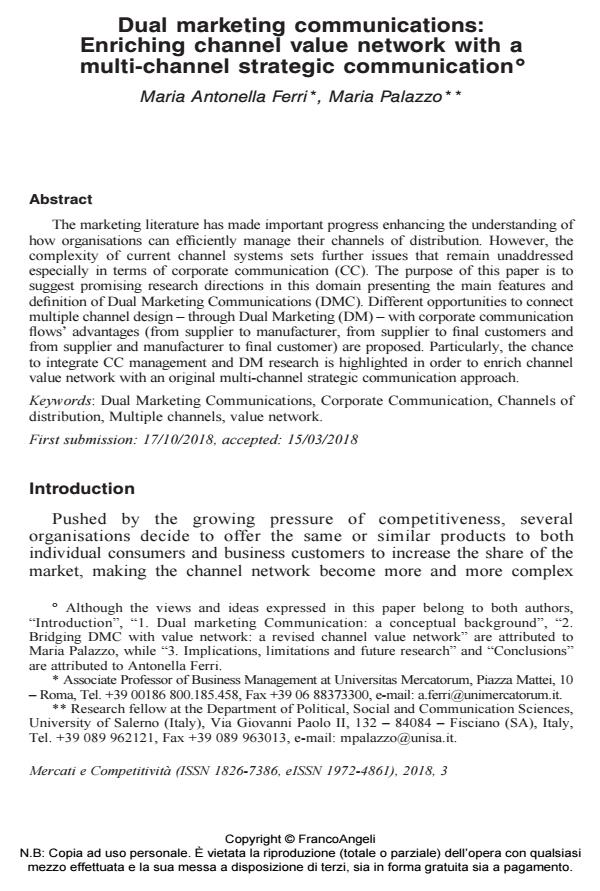Dual marketing communications: Enriching channel value network with a multi-channel strategic communication
Titolo Rivista MERCATI & COMPETITIVITÀ
Autori/Curatori Maria Antonella Ferri, Maria Palazzo
Anno di pubblicazione 2018 Fascicolo 2018/3
Lingua Inglese Numero pagine 15 P. 69-83 Dimensione file 134 KB
DOI 10.3280/MC2018-003005
Il DOI è il codice a barre della proprietà intellettuale: per saperne di più
clicca qui
Qui sotto puoi vedere in anteprima la prima pagina di questo articolo.
Se questo articolo ti interessa, lo puoi acquistare (e scaricare in formato pdf) seguendo le facili indicazioni per acquistare il download credit. Acquista Download Credits per scaricare questo Articolo in formato PDF

FrancoAngeli è membro della Publishers International Linking Association, Inc (PILA)associazione indipendente e non profit per facilitare (attraverso i servizi tecnologici implementati da CrossRef.org) l’accesso degli studiosi ai contenuti digitali nelle pubblicazioni professionali e scientifiche
The marketing literature has made important progress enhancing the understanding of how organisations can efficiently manage their channels of distribution. However, the complexity of current channel systems sets further issues that remain unaddressed especially in terms of corporate communication (CC). The purpose of this paper is to suggest promising research directions in this domain presenting the main features and definition of Dual Marketing Communications (DMC). Different opportunities to connect multiple channel design - through Dual Marketing (DM) - with corporate communication flows’ advantages (from supplier to manufacturer, from supplier to final customers and from supplier and manufacturer to final customer) are proposed. Particularly, the chance to integrate CC management and DM research is highlighted in order to enrich channel value network with an original multi-channel strategic communication approach.
Parole chiave:Dual Marketing Communications, Corporate Communication, Channels of distribution, Multiple channels, value network.
- Beyond Multi-channel Marketing Tuğra Nazlı Akarsu, Pantea Foroudi, T.C. Melewar, pp.121 (ISBN:978-1-83867-686-5)
Maria Antonella Ferri, Maria Palazzo, Dual marketing communications: Enriching channel value network with a multi-channel strategic communication in "MERCATI & COMPETITIVITÀ" 3/2018, pp 69-83, DOI: 10.3280/MC2018-003005